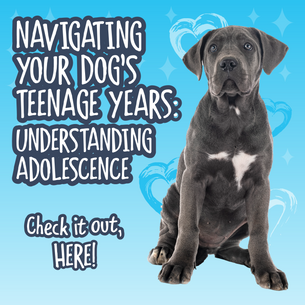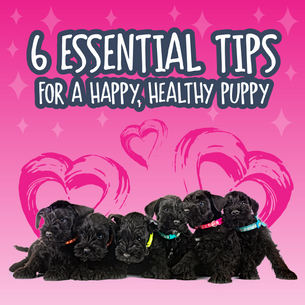Do you have a fire safety plan for your dog? In the UK, fire and rescue services attend over 20,000 house fires each year. It’s a scary thought — and one that has the potential to be even more concerning if you have a dog, cat or other animal sharing your home.
Our pets are part of the family, and keeping them safe is paramount. As responsible dog owners, we invest time in training our dogs to have a reliable recall so we know they’re going to come back when we call. We teach Boundary Games so they understand not to rush out of doorways into the road or swipe potentially harmful food off the kitchen counters.
And yet how often do we think about preparing them for a fire in the home?
As we approach National Pet Fire Safety Day, observed every year on 15th July, join us as we share six essential pet fire safety tips for dog owners that will help keep you and your dog safe if the worst were to happen.
Fire Safety Tip 1: Prevention is Paramount
Top of the list on any fire safety plan is prevention.
Pets are naturally curious, and it's a well publicised fact that our beloved dogs, cats and other pets are responsible for starting a percentage of all reported house fires each year.
If you’ve welcomed a puppy, or even an older dog into your home, “puppy proofing” was probably quite high up on your list of priorities. You more than likely repositioned wires that might get chewed, put valuable possessions and favourite shoes out of reach and limited access to rooms where toileting accidents might be harder to clear up. Considering fire hazards is also vital – and doesn’t only apply to curious puppies.
Dogs and cats can start fires by knocking over candles, accidentally turning knobs on the stove or sending hot pans flying, so thinking about all the ways you can fire-proof your home will minimise the risks and help keep everyone safe:
- Supervision: Never leave dogs, cats or other pets unattended around open flames or hot surfaces, and consider using flameless candles. A curious swish or happy wagging tail is all it takes to send a candle flying.
- Cookers and stoves: Hob knob covers can prevent curious paws from accidentally turning on your hob or oven when you’re not around.
- Fireplaces and Heaters: Ensure fireplaces have a protective screen and heaters are placed where pets can't knock them over.
- Hide cords: Keep wires out of reach or use cord protectors to prevent curious teeth chomping through those electrical wires.
- Unplug devices: Unplug electrical devices when not in use to reduce the risk of fire.
- Use childproof locks: Install childproof locks on cupboards containing dangerous materials and anything hazardous.
- Install smoke detectors: Making sure your home has smoke detectors, and checking them regularly to ensure they are working properly is vital for the safety of everyone in your home, including your pets. If you regularly leave your dog or other pets home alone, consider using monitored smoke detectors, so emergency responders can be contacted when you’re not home.
Ensuring your dog has value for a boundary is the very best way to keep them away from kitchen dangers. Not only will that ensure they don’t get the opportunity to swipe food from the counters, or rush at visitors coming into your home, it will mean you have a well-rehearsed and valued behaviour that will keep your dog away from potential kitchen risks.
Here at Absolute Dogs we love Boundary Games for every aspect of life. They teach your dog so many vital, real-life skills – and in the context of safety around the house one of the most valuable is the ability to relax and settle calmly and independently, without following you around. Real Life Boundaries really can be a life-saver.
Fire Safety Tip 2: Keep Your Dog Safe When You’re Out
When you’re out, think about where you want your dog to be able to confidently and happily relax. Putting value into your dog’s separation skills – especially if they have shown any signs of separation anxiety, should be a key part of your training plan.
When it comes to fire safety, this isn’t your only consideration. It can help to give some time and thought to the following.
- Keep leads and collars accessible: Making sure you keep a set of leads and collars easily accessible near the entrances and exits of your home will mean you can grab them quickly if you need to evacuate – and will also help anyone rescuing your pets when you’re not home.
- Home alone location: When you’re out, think about where you leave your dog and other pets for easy rescue. If possible, make sure your dog is left in a contained area that is easily accessible from outside. This will make it much easier for firefighters to get to them if necessary. However optimistic and robust to novelty your dog is, a house fire is terrifying, and a dog with free access to the whole of your house will be much harder to find – especially if they choose to hide when scared. Consider leaving them in one room with an exterior door or windows – while also making sure they are able to remain calm and settled in that space while you’re out.
- Microchip: Make sure your dog’s microchip is up-to-date in case you’re separated for any reason during an emergency.
Fire Safety Tip 3: Create a Fire Escape Plan for your Dog
A well-thought-out, and well-rehearsed fire escape plan is essential for every household, especially those with dogs and other pets. Here are some steps to create an effective plan:
- Identify exits: Ensure everyone in your family knows the location of all exits and how to use them. Keep in mind that normal exits could be obstructed by fire, so your escape plan should include alternative means of escape. In the UK, local fire department websites offer advice on evacuation plans.
- Assign pet responsibilities: It can help to assign specific family members the job of securing and evacuating pets. Keep in mind that dogs and cats are likely to be scared and may choose to hide, so it’s worth being aware of any favourite hiding places your pets are likely to choose. If you can't locate your pets quickly, you must prioritise your own safety and evacuate immediately. Leave the door open so dogs and cats have a chance to follow. Once outside, call out to help guide them and inform firefighters that they are still inside.
- Practise regularly: Conduct regular fire drills, including your dogs and other pets, to ensure everyone knows their role. Just like every aspect of your training, you can make this a fun game for your dog! Investing in skills for the situation means you and your dog will be much more prepared if you ever need to put those skills to the test.
Fire Safety Tip 4: Training Your Dog for Fire Emergencies
Here at Absolute Dogs, we believe in training FOR the situation before you expect your dog to have the necessary skills IN the situation.
Fire is one of those situations you hope you and your dog will never have to face, and yet those same key skills and concepts that will set your dog up for the very best success in other situations could make all the difference.
Just as you might be intentional about creating positive pairings with noises to help your dog cope with fireworks, or thunder – or even with knocks at the door – consider doing the same with the sound of your smoke alarm.
Positive Pairing, or what we like to call DMT or “Distraction. Mark. Treat”, is a technique that can transform your dog's emotional response from anxious to confident during loud and startling events. It's all about rewarding calm behaviour to help your dog associate those scary sounds with positive experiences.
This starts with noises you know your dog isn’t worried about to build up a positive association with a calmly delivered marker word such as “Niiice” or “Goood”. Mark anything and everything that makes a sound and deliver a piece of food calmly to your dog. Really build up that value so your dog understands that good things are headed their way when they hear that marker.
As your dog becomes more confident, you can start introducing more distracting or worrying noises at low volume. Keep in mind that your dog’s hearing is way more sensitive than yours, so activating your smoke alarm is likely to be way more than your dog’s ears can handle – but pairing similar sounds with a calmly delivered reward can help prepare your dog.
Games like Crazy Lady and Ding Dong Dash, which you can discover in Games Club, can help create a well-rehearsed reflex response that will have your dog suctioning to their bed when they hear particular sounds – something that could be a life-saver in the event of a fire where you really need your dog to be able to listen and respond to your cues.
Learn more about DMT and the power of positive pairings in the Absolute Dogs Optimism Rocks eBook!
Making sure your dog has a really reliable recall – inside the house as well as outside – is another vital skill. Ensuring you have worked on your dog’s ability to think and respond to you in higher levels of arousal will mean they are much more likely to be responsive to you in an emergency situation. Games are the perfect way to do this, and you can find many targeted games inside Games Club.
Alongside Boundary Games, investing value in crate training can be hugely beneficial for fire emergencies, as it provides a safe and secure place for your dog if needed during an evacuation. For some super tips on making the crate a positive experience check out Crate Solutions, Great Strategies! on our YouTube channel.
Fire Safety Tip 5: Install a Pet Alert Window Sticker
Pet alert window stickers can save lives by making sure firefighters and emergency responders know there are pets inside your home.
Place these stickers on windows near each entrance to your home, and keep them up to date with the number and types of pets in your home. Putting your personal information on the reverse means emergency services will have access to your personal information, but casual passers-by won’t.
Fire Safety Tip 6: Emergency Resources and Contacts
In the event of a fire, quick access to emergency contacts is crucial. As well as your local fire department’s number, make sure you know the location and contact details of your nearest emergency veterinary clinic.
Watch your dog and other pets closely for any signs that could indicate smoke inhalation, and arrange to see your vet as soon as possible – even if everything seems normal.
Fire safety is an essential aspect of responsible pet ownership. By following these tips and incorporating your dog and other family pets into your fire safety plans, you can help ensure their safety in the event of an emergency.
This National Pet Fire Safety Day, take the time to review and enhance your fire safety measures to protect your dogs, cats and other pets, and make sure you share, share, share these strategies with all the dog-lovers you know so we can encourage others to do the same.
And be sure to check out the Absolute Dogs Games Club if you want to learn more about games-based concept training and enjoy the awesome fun of training your dog through the power of positive training and play.




